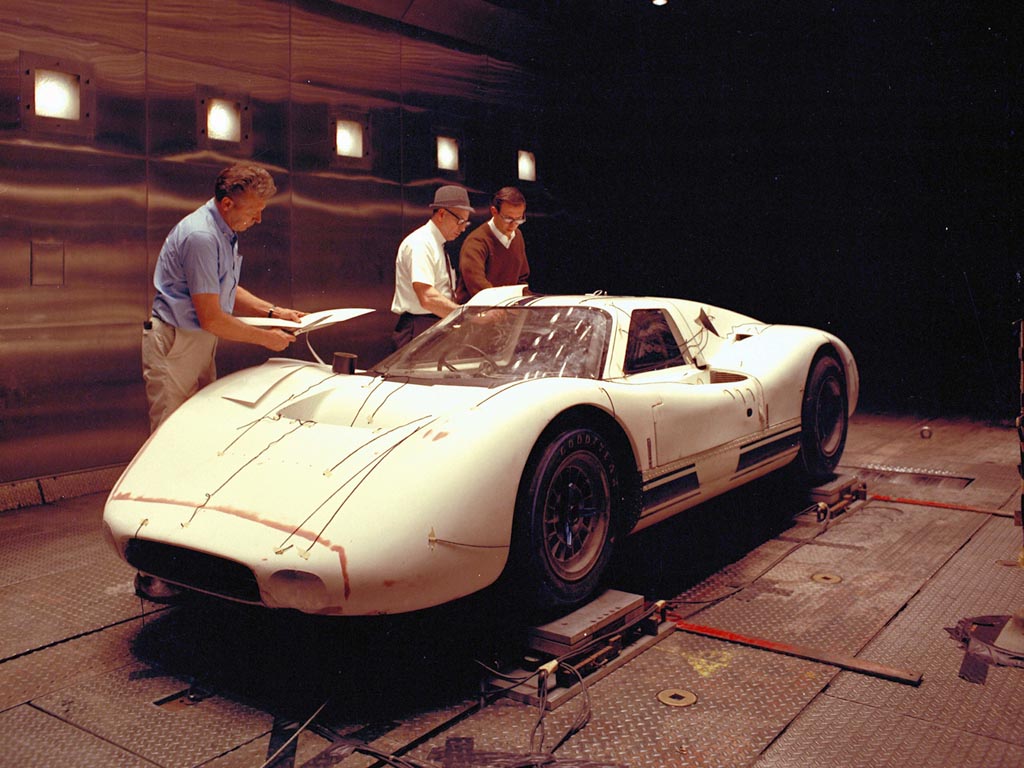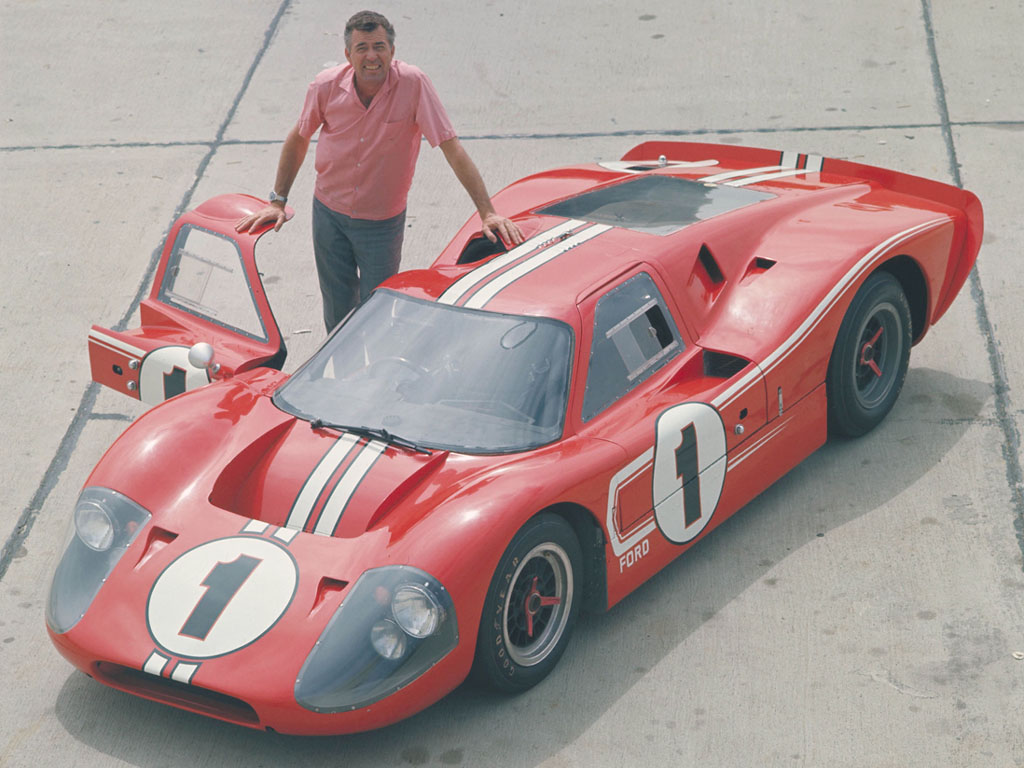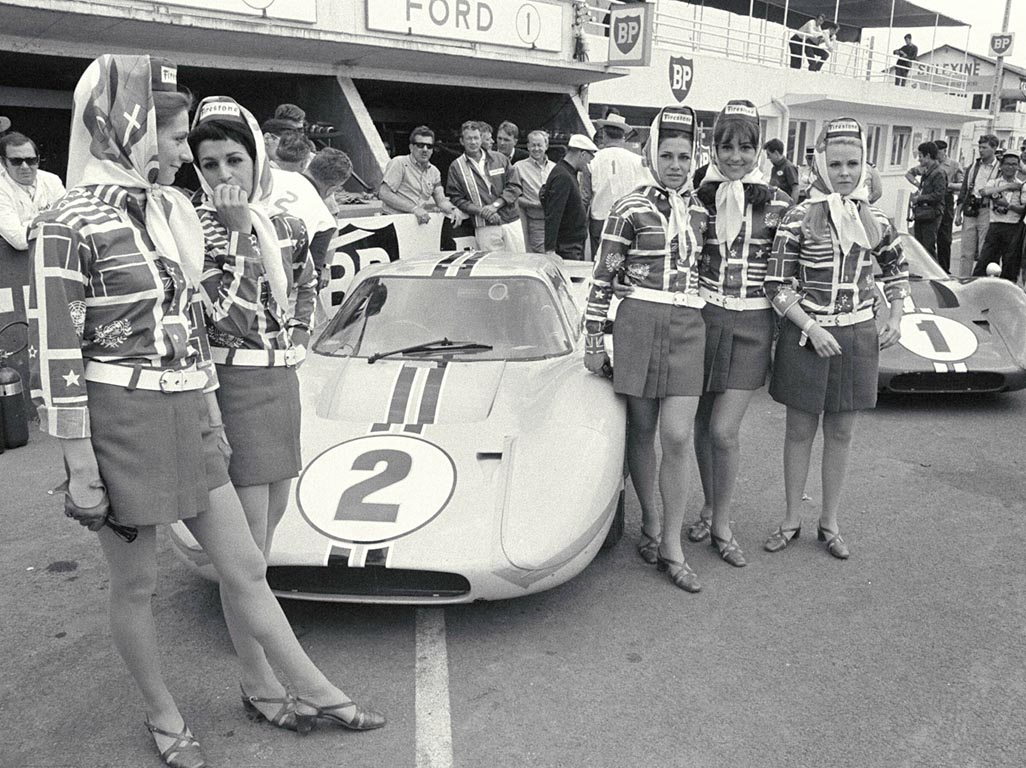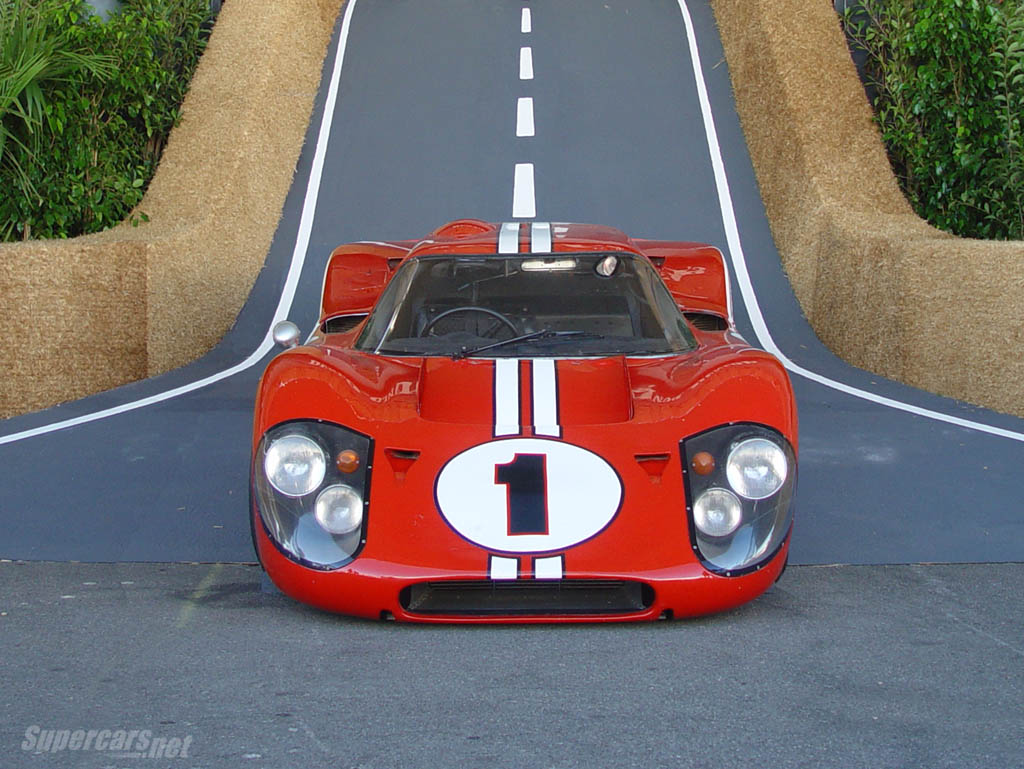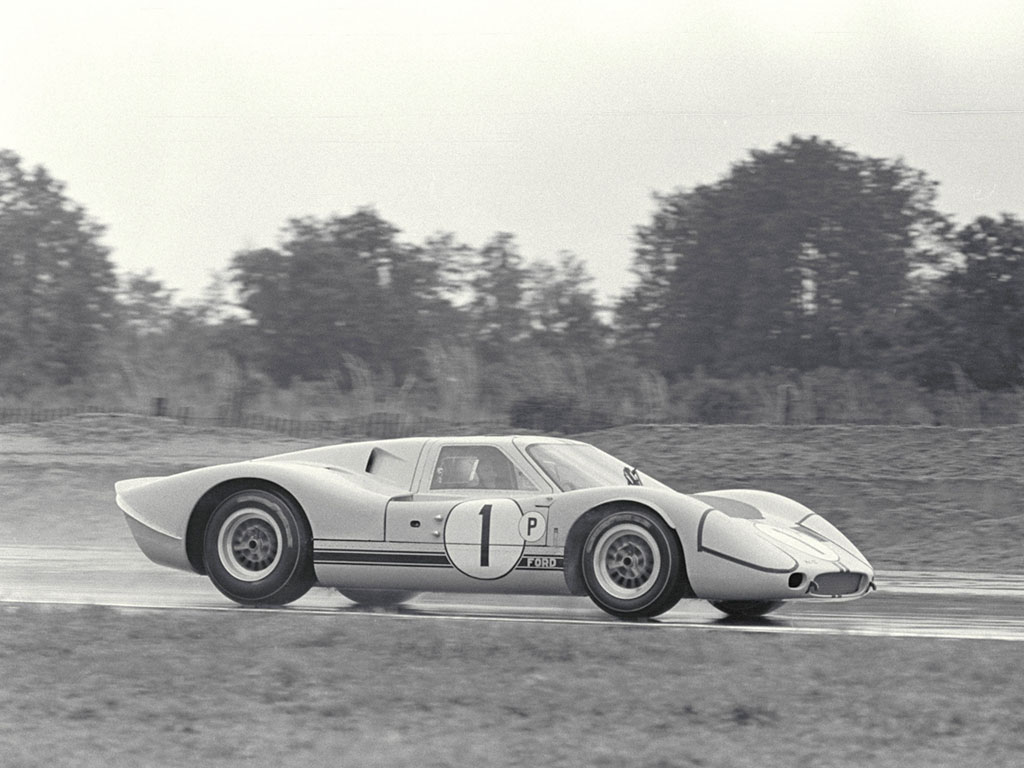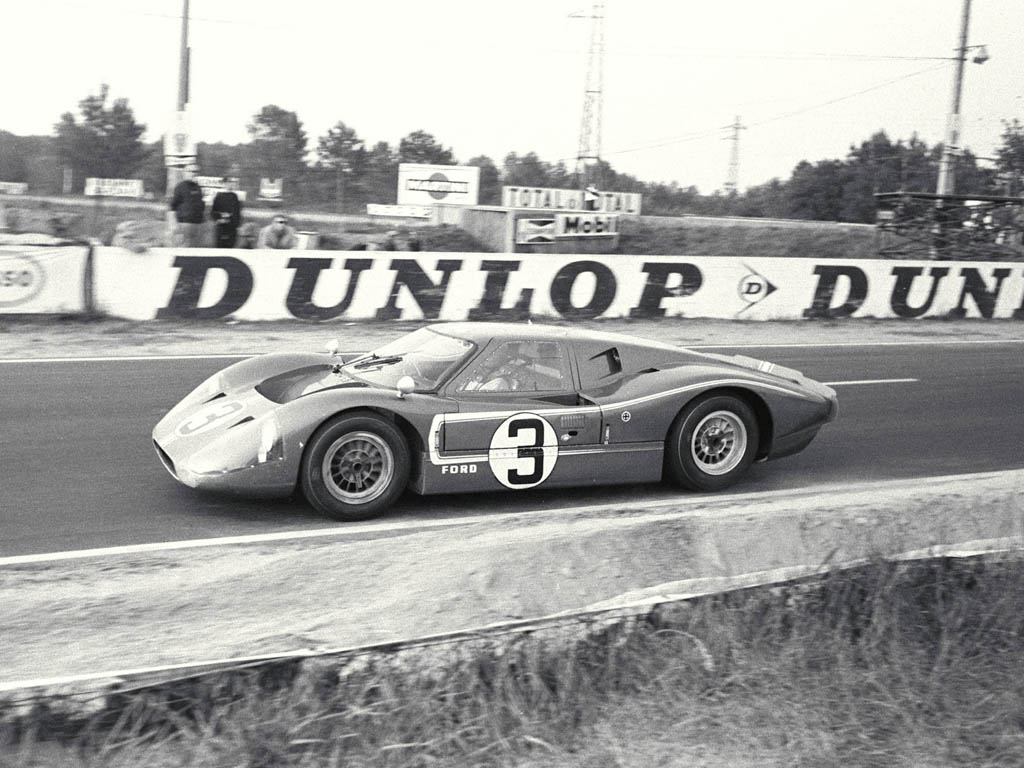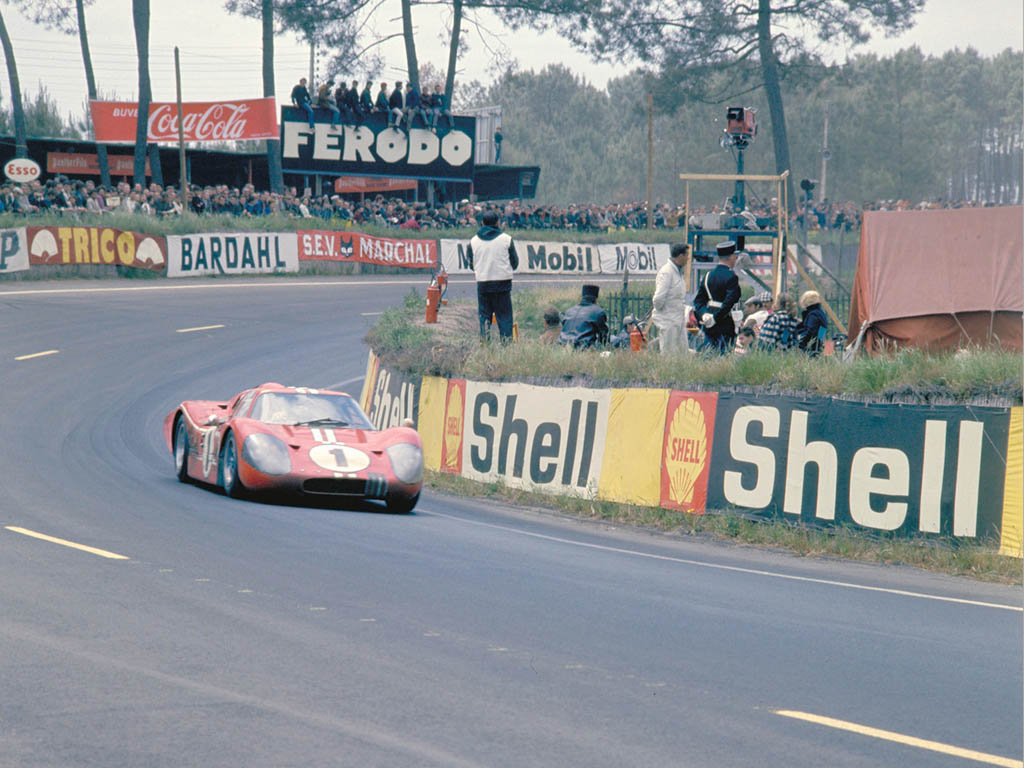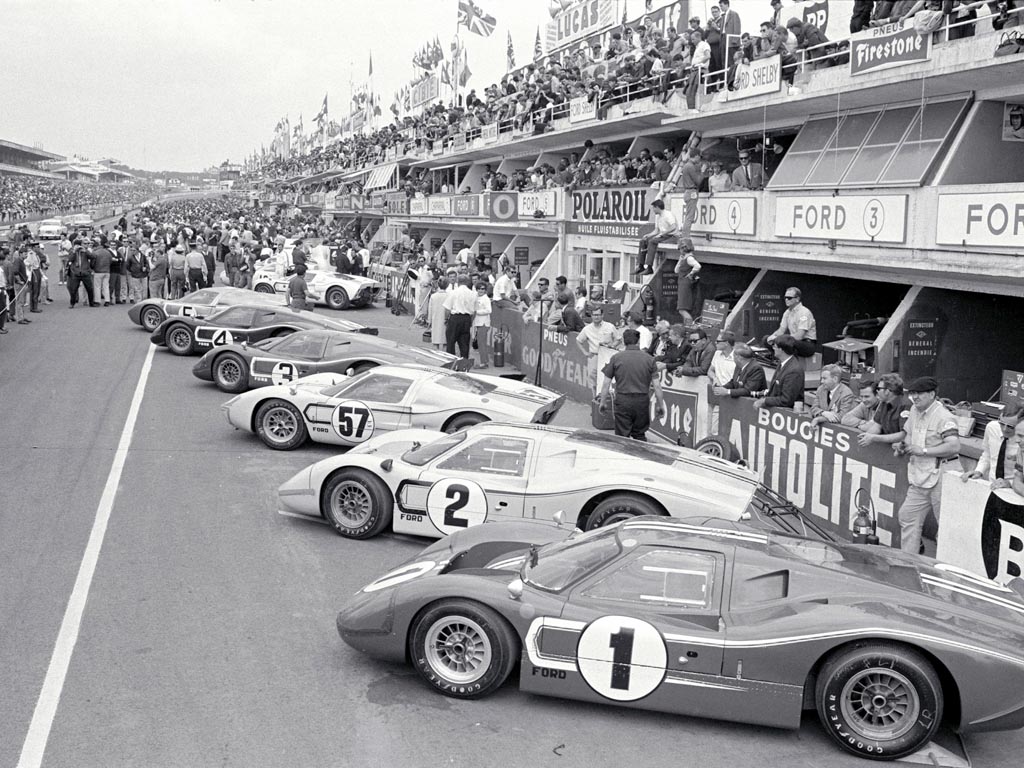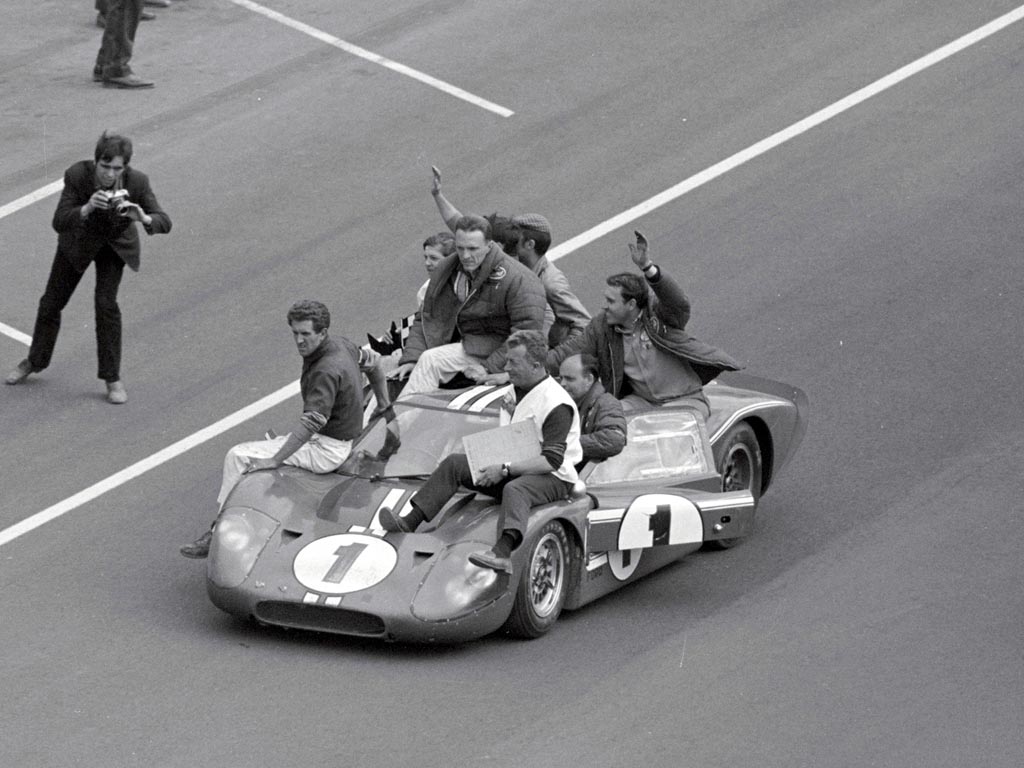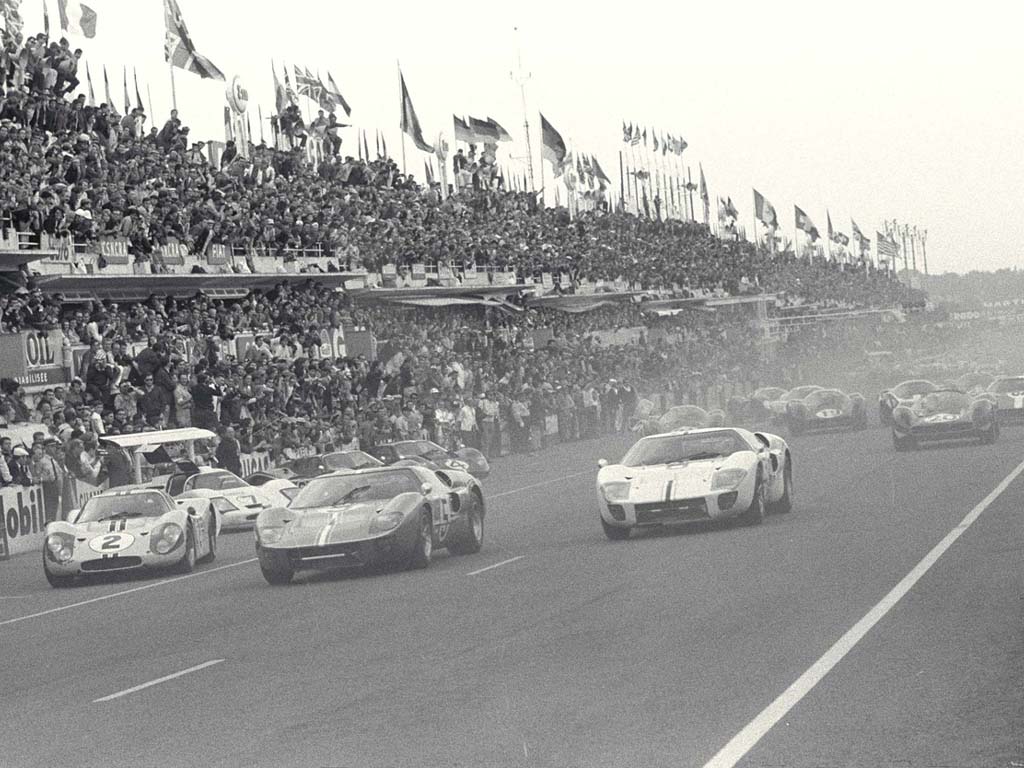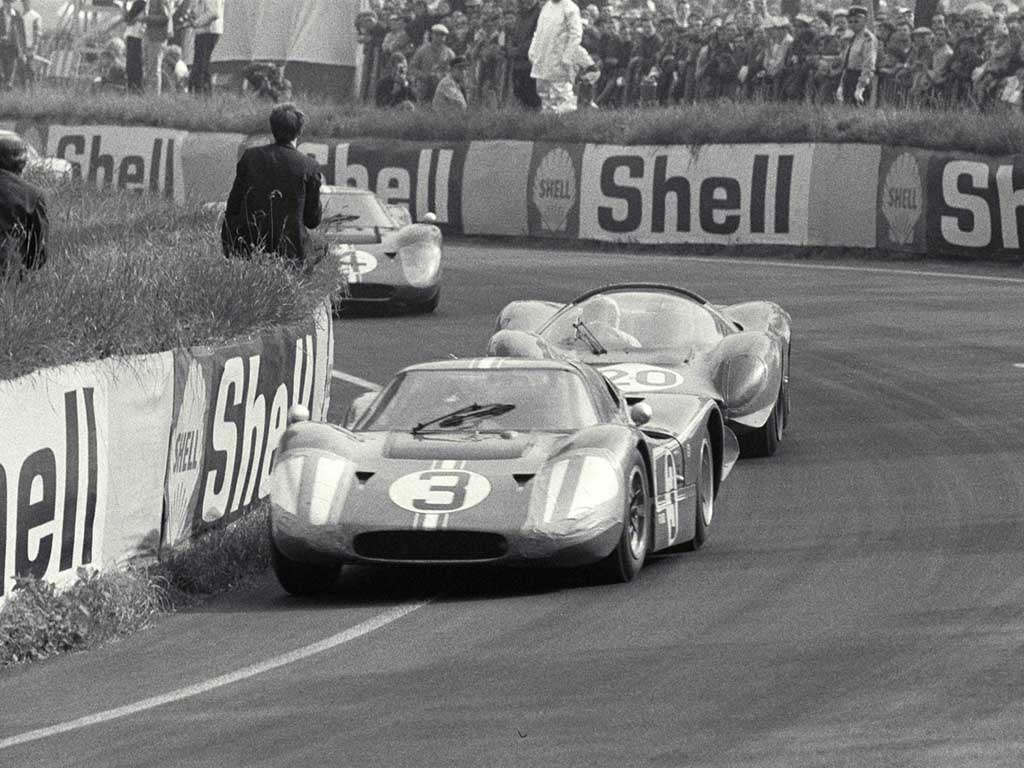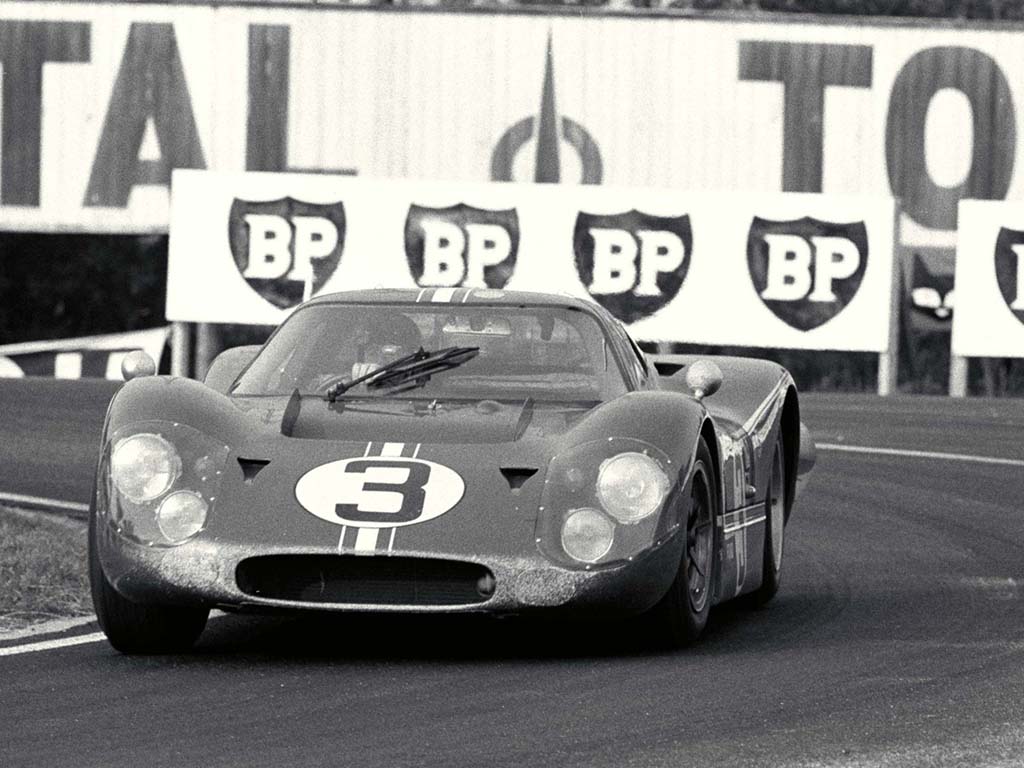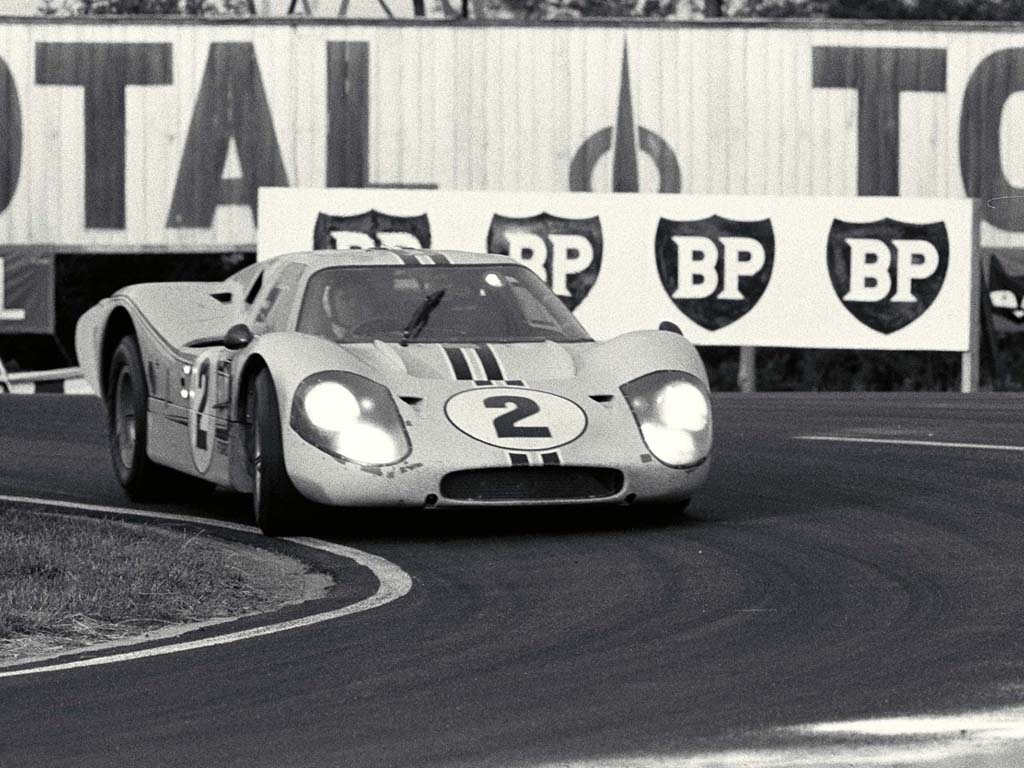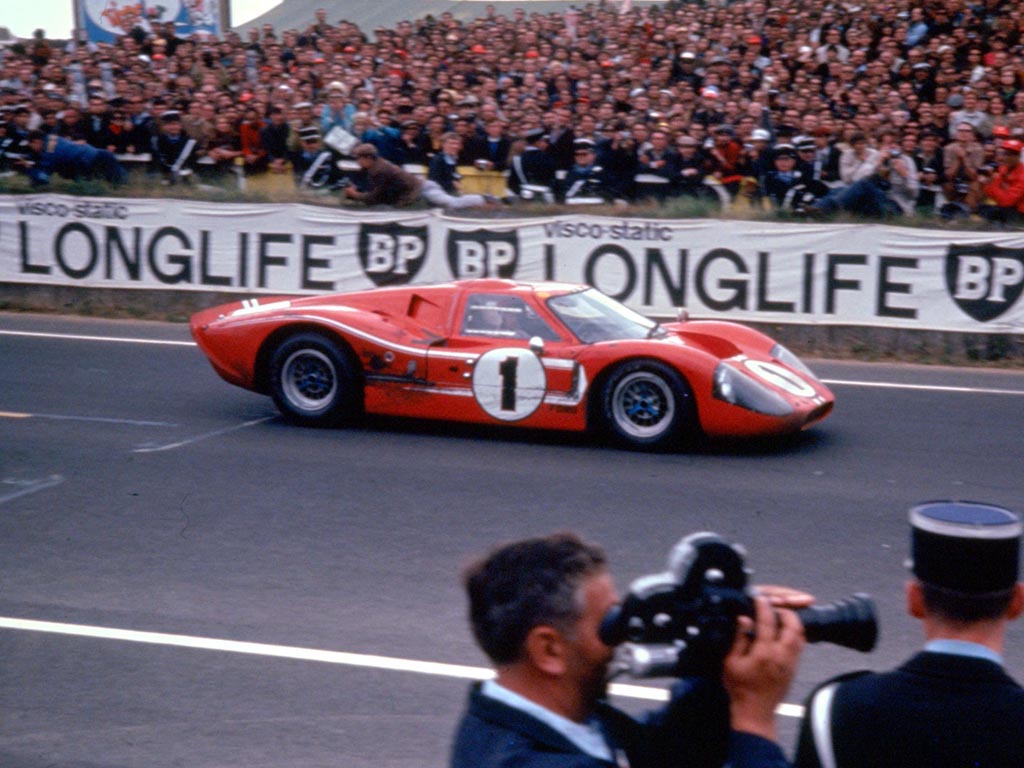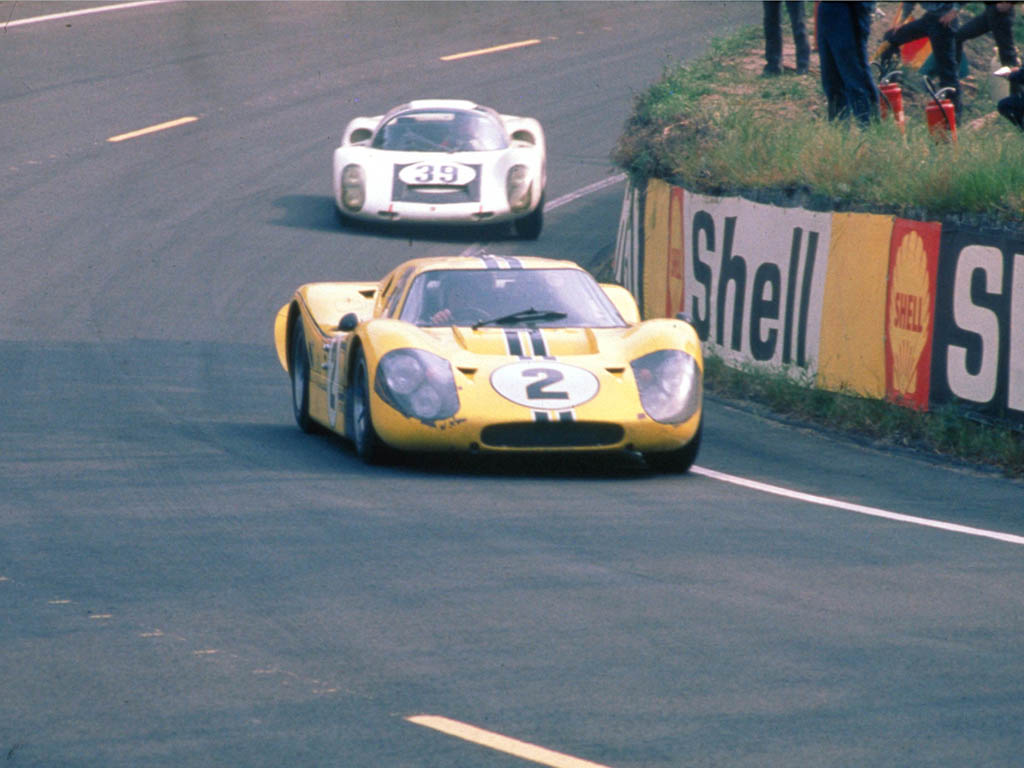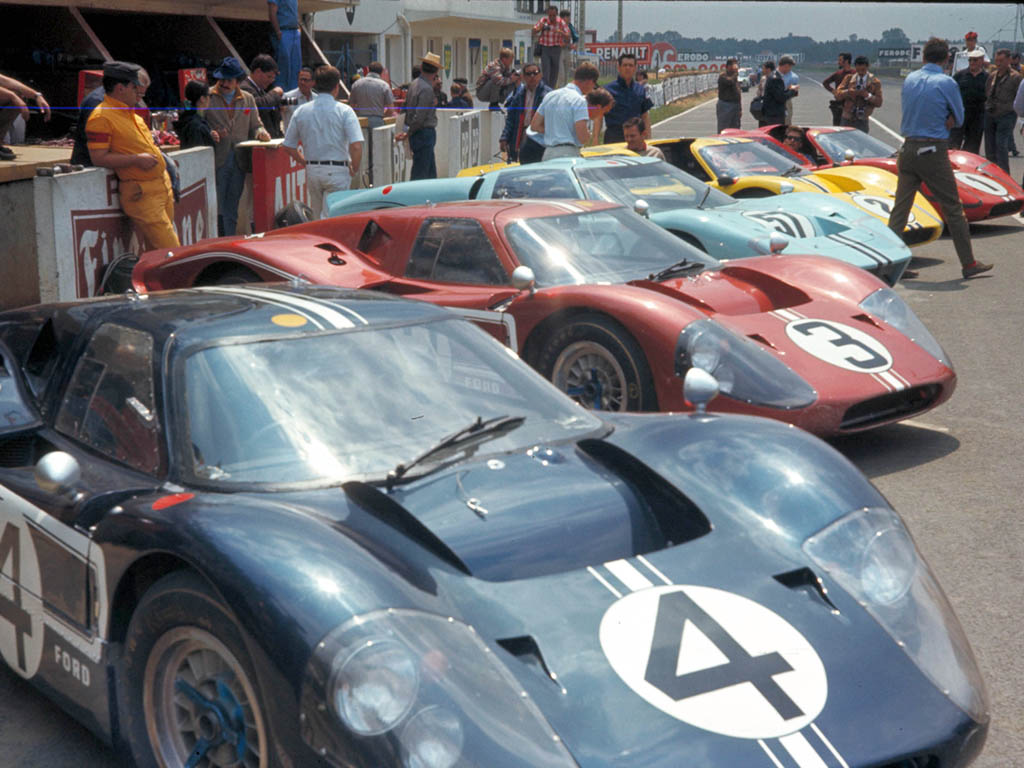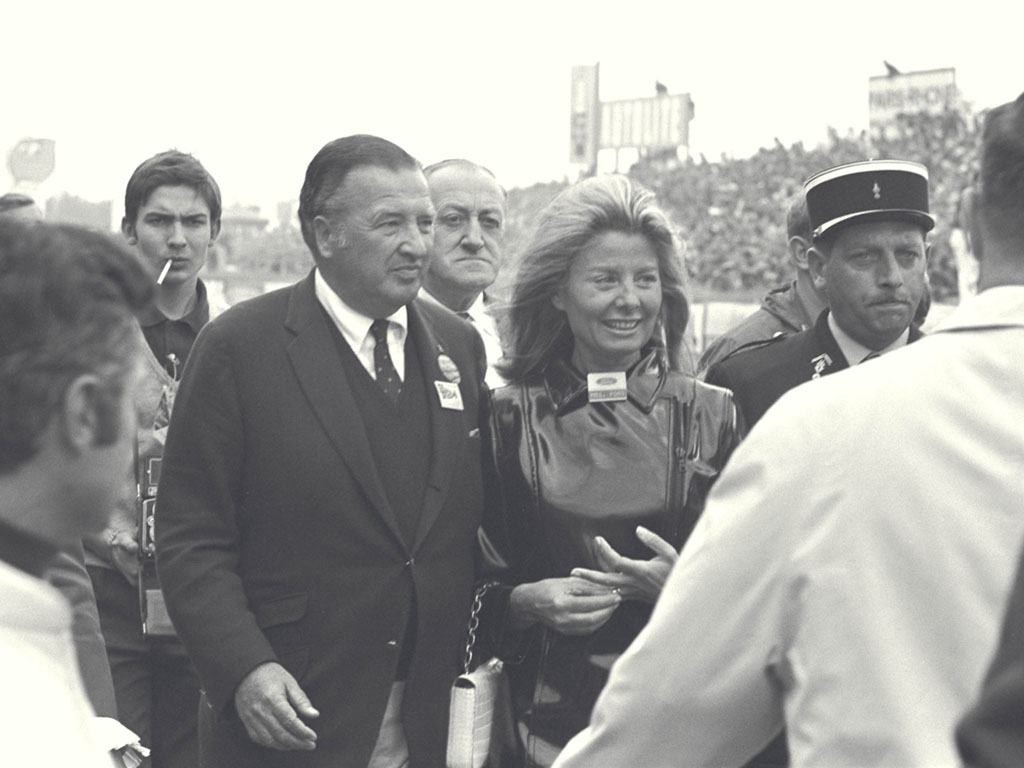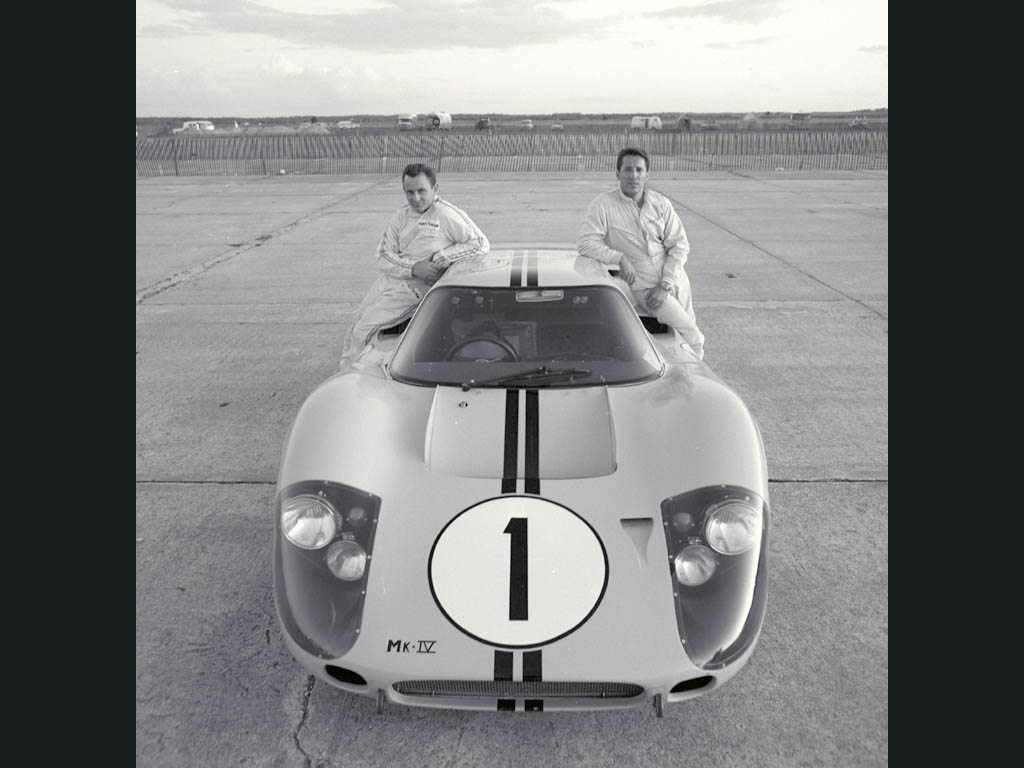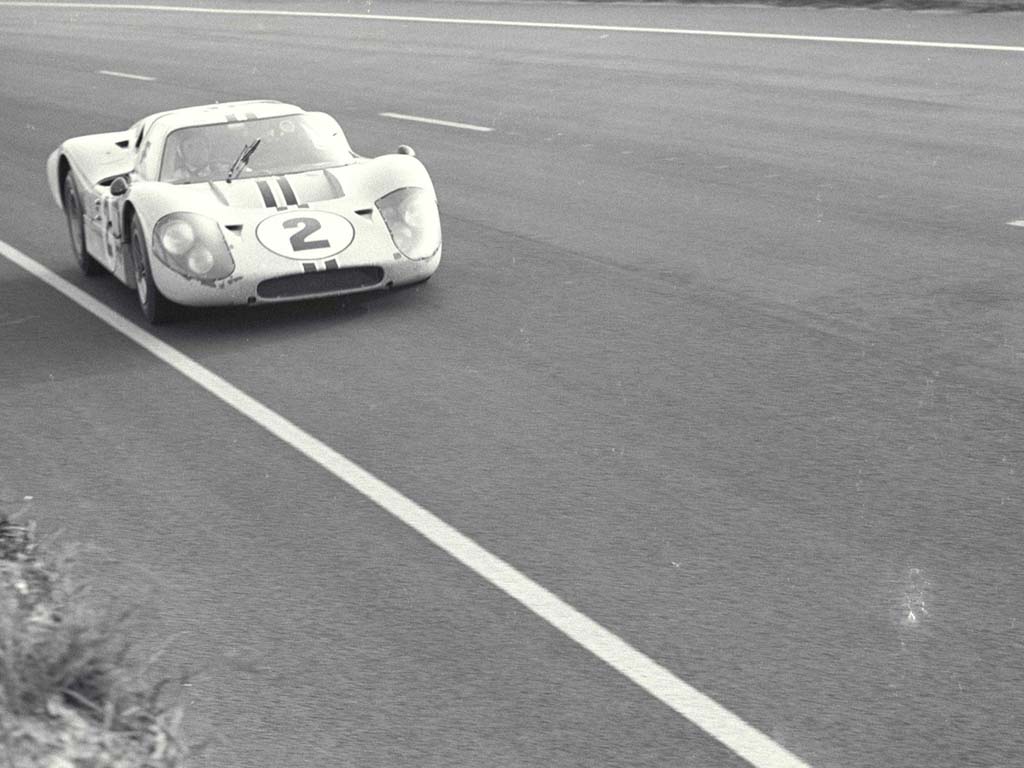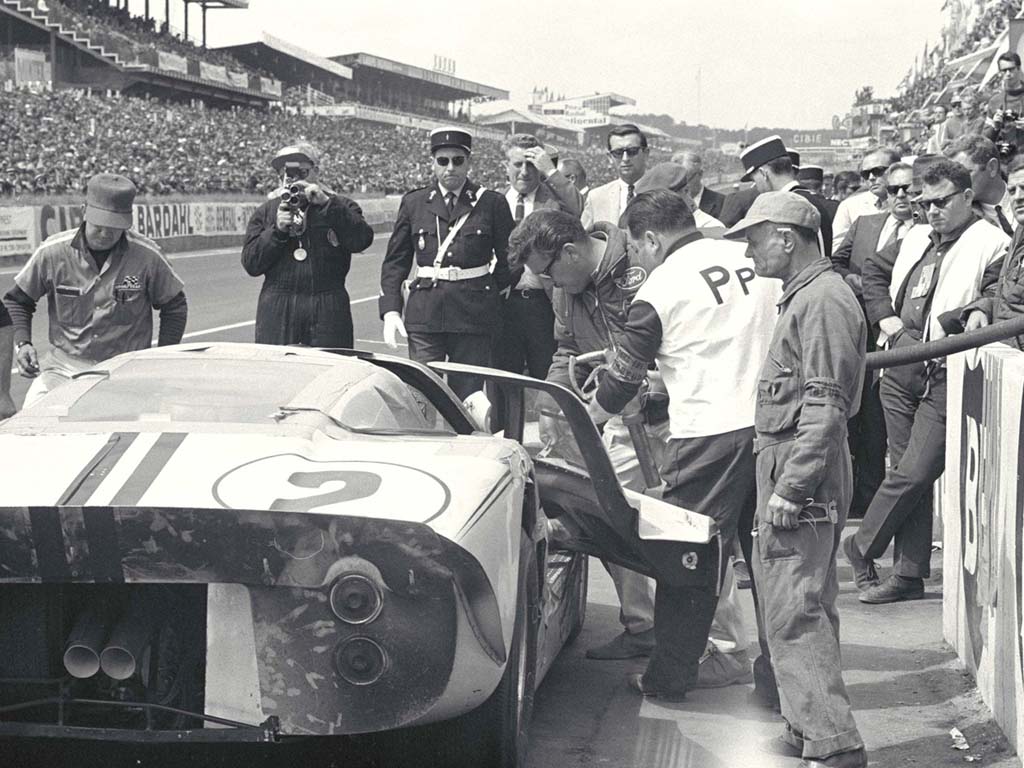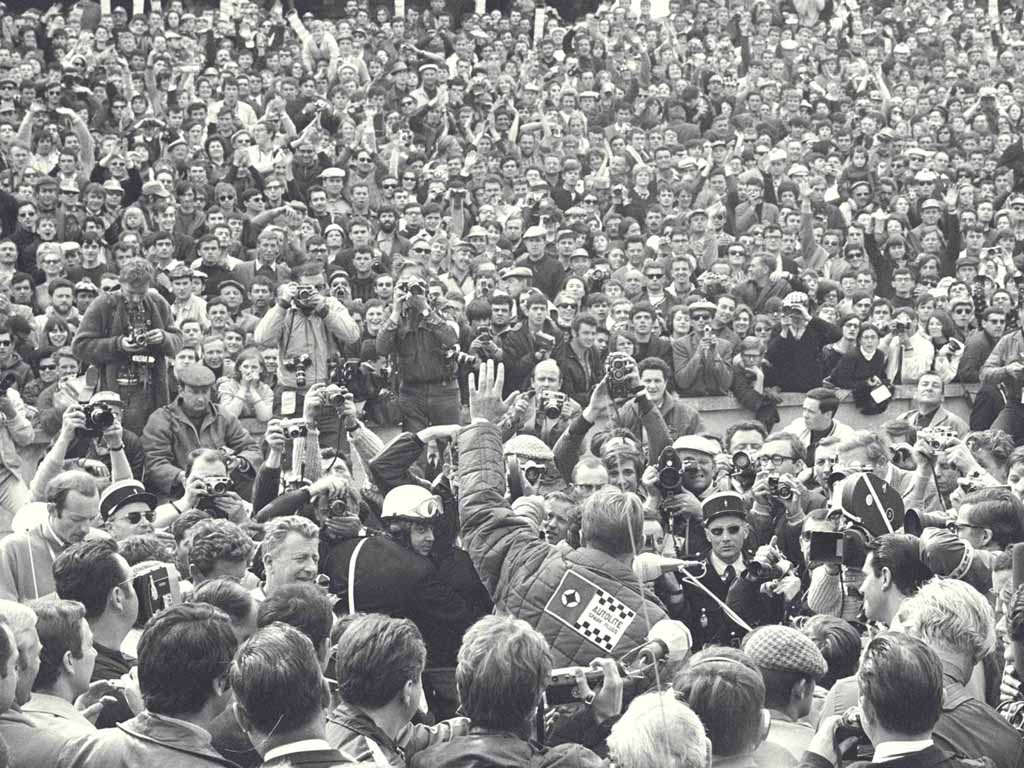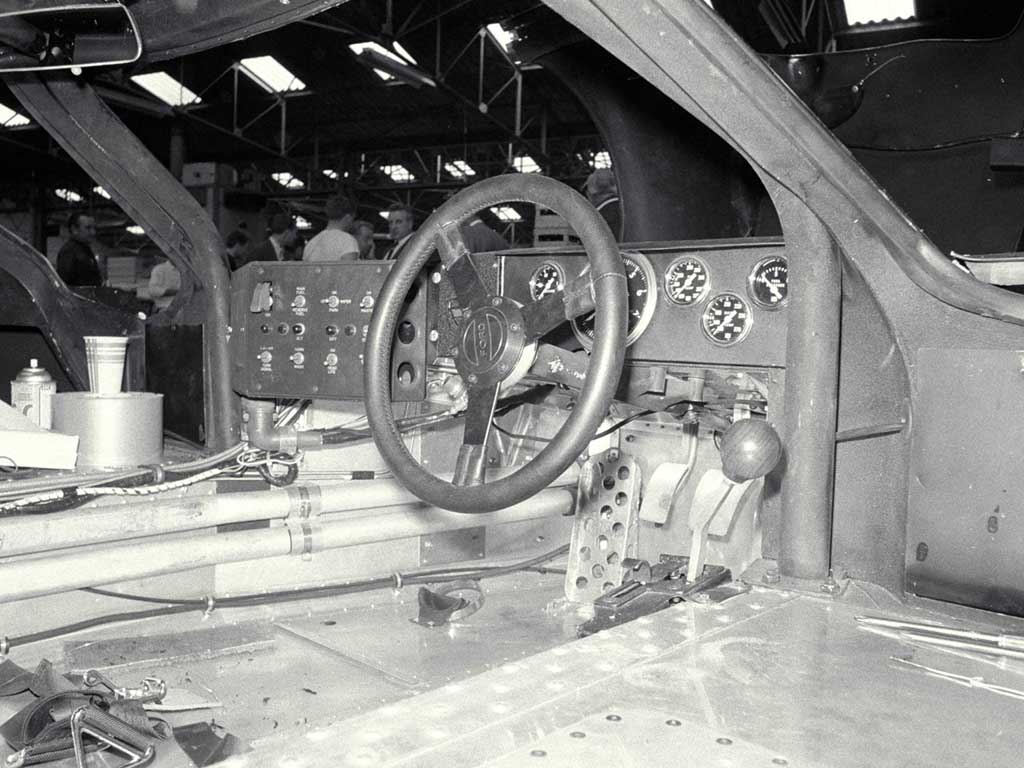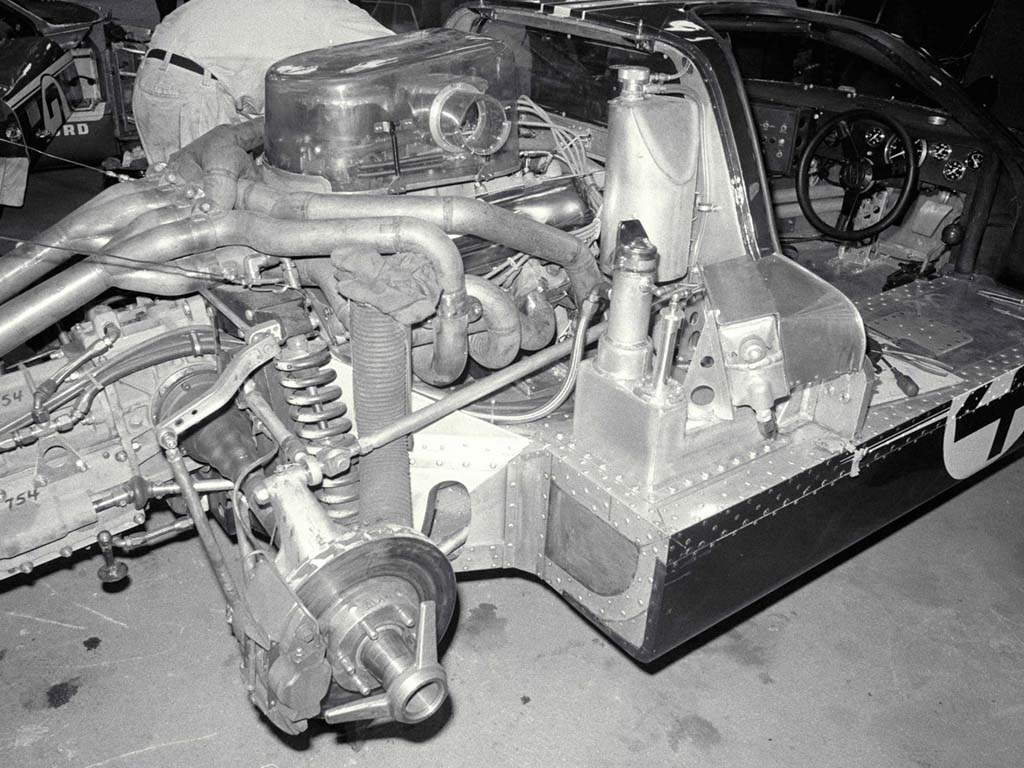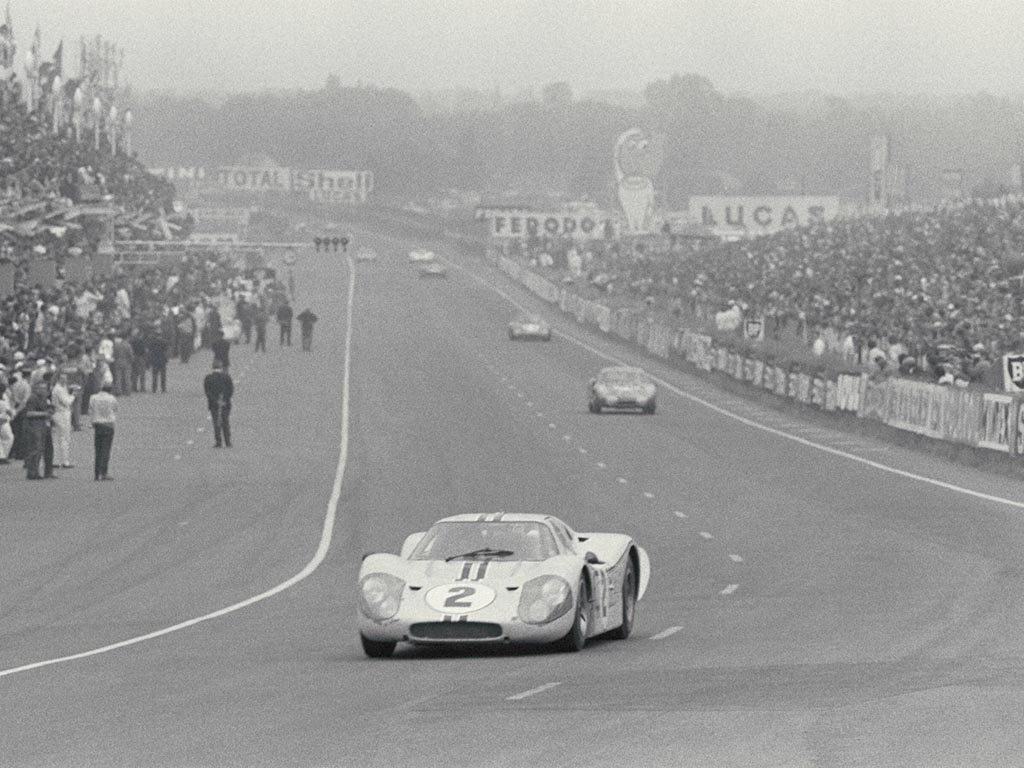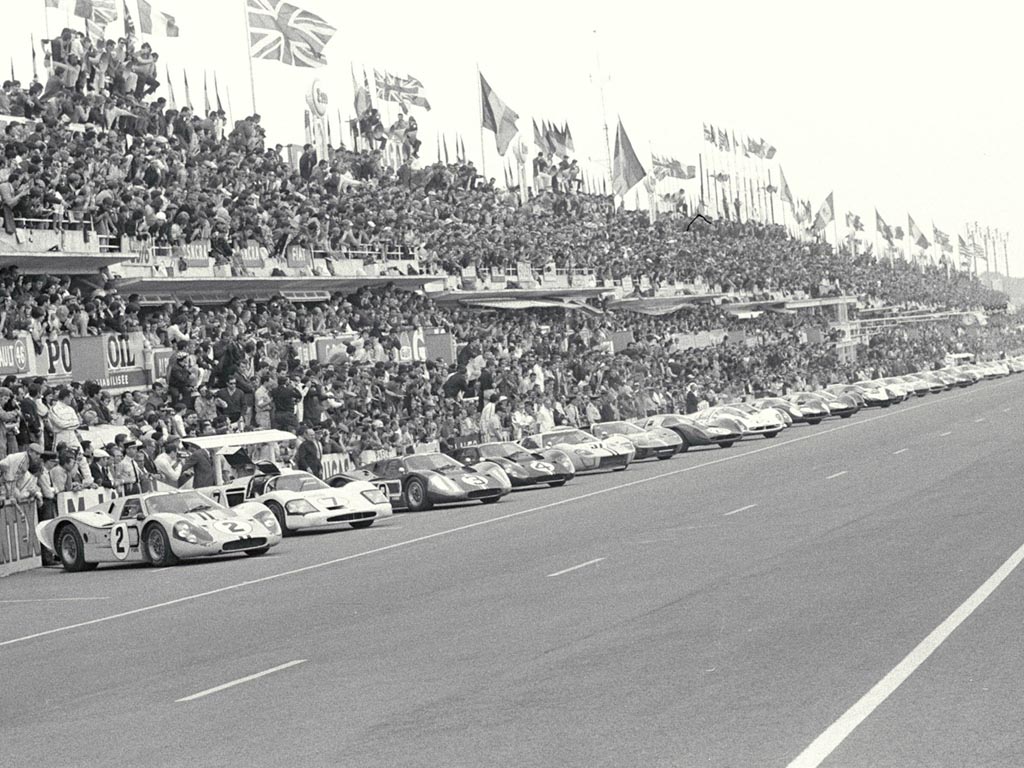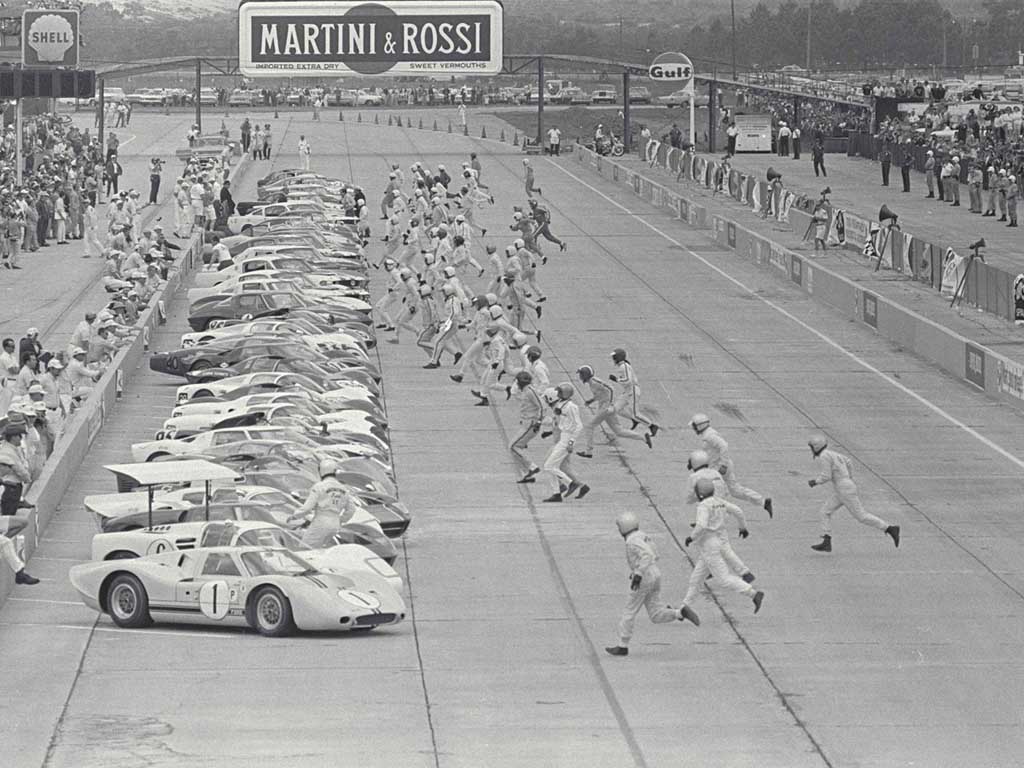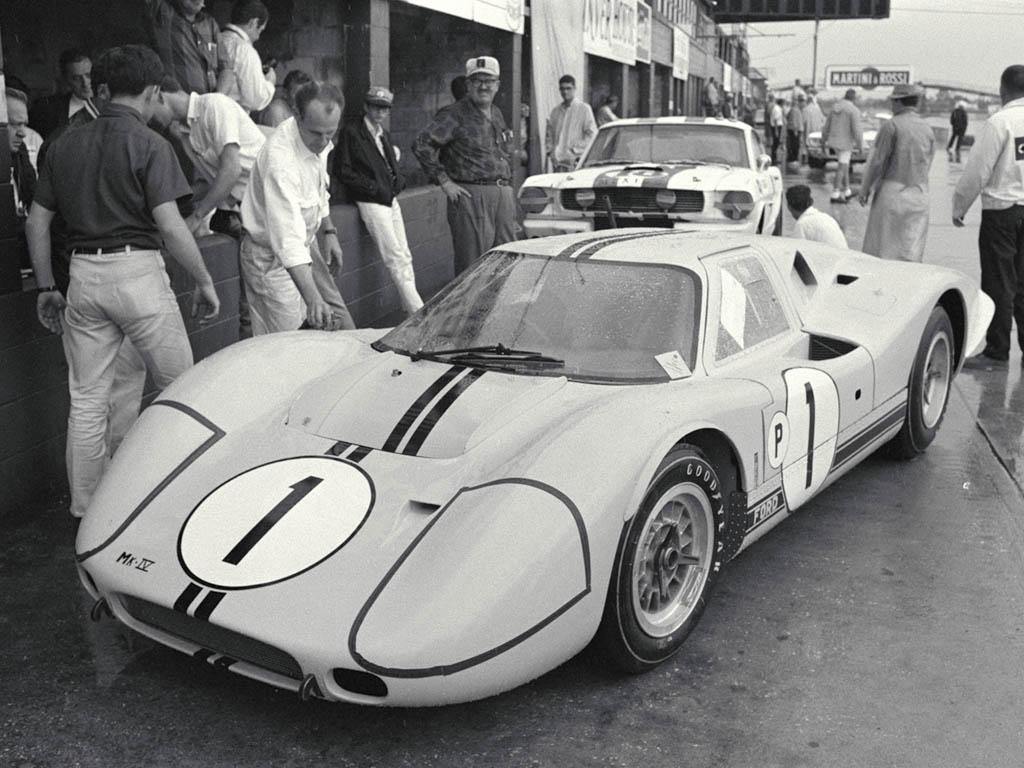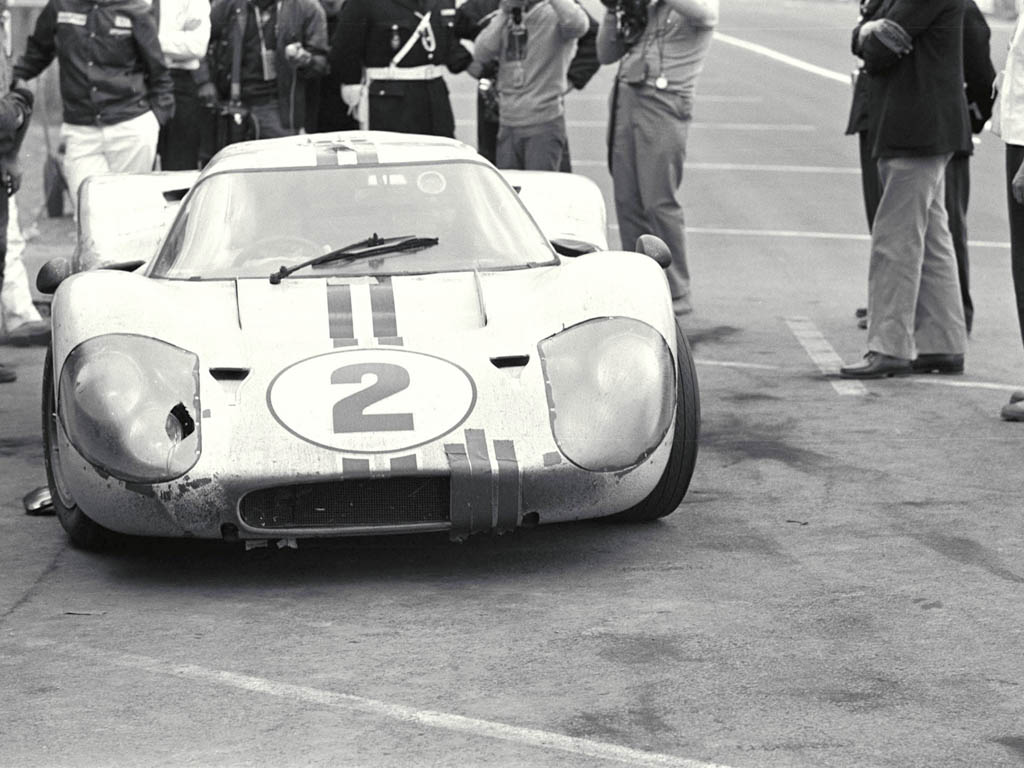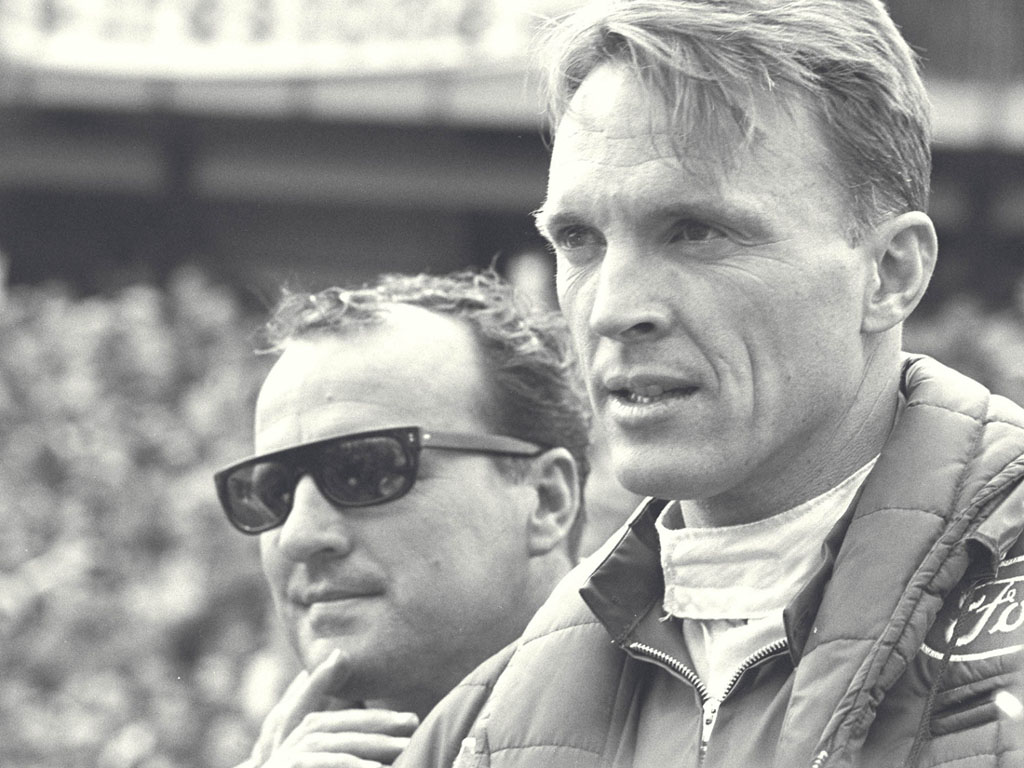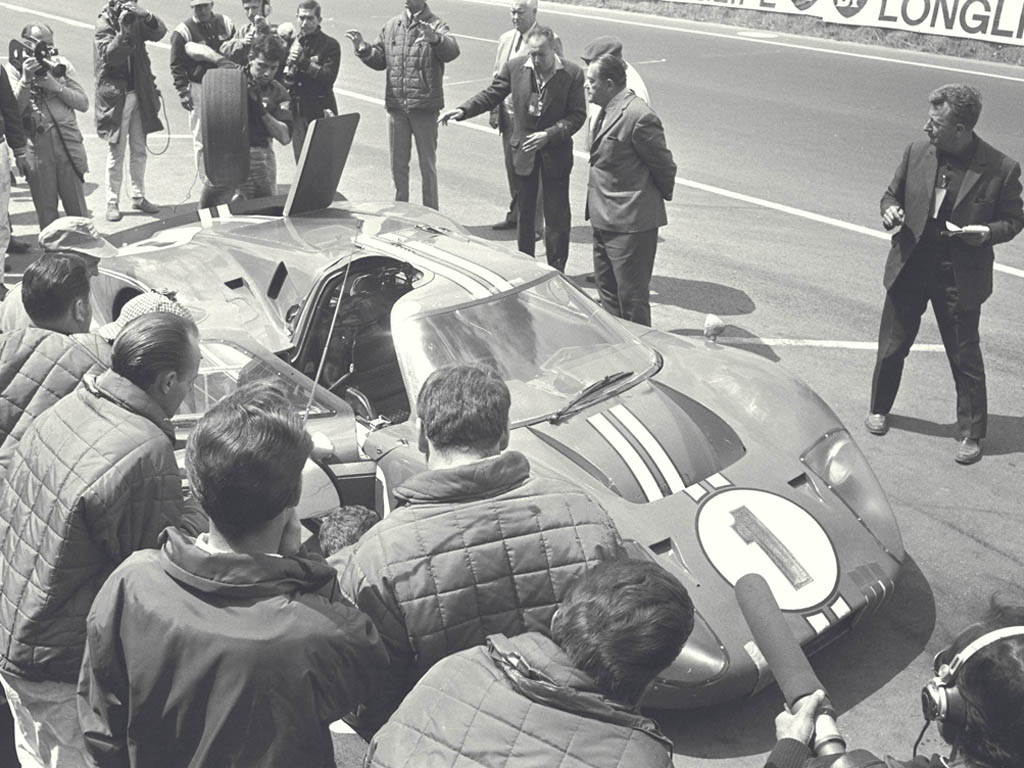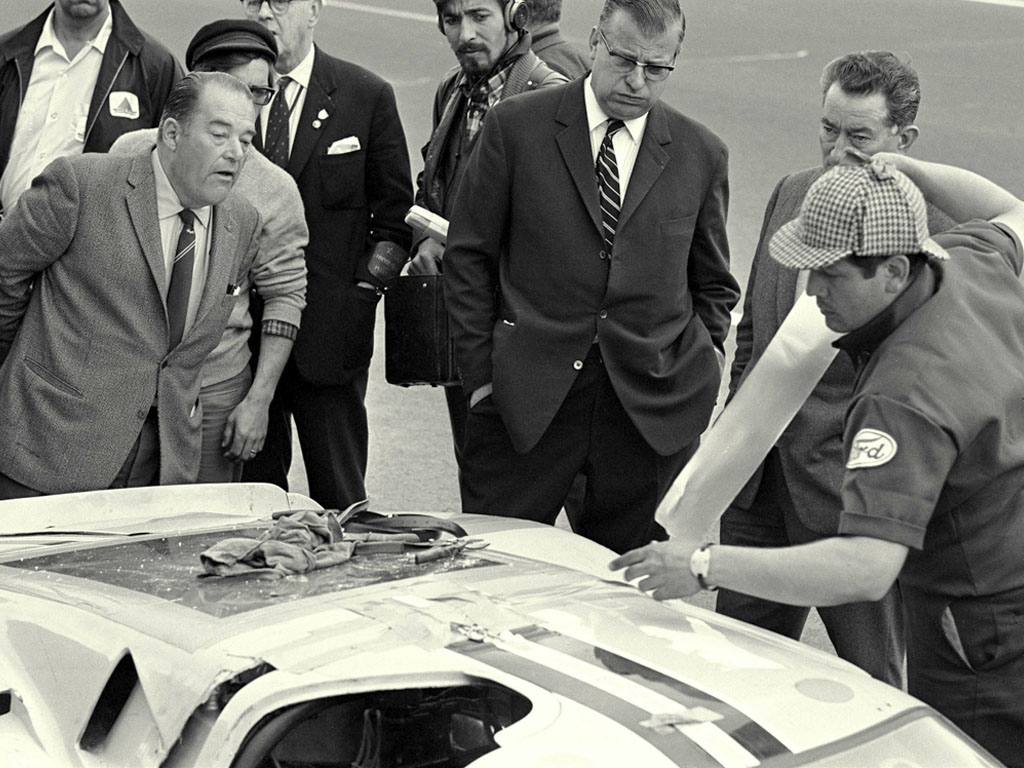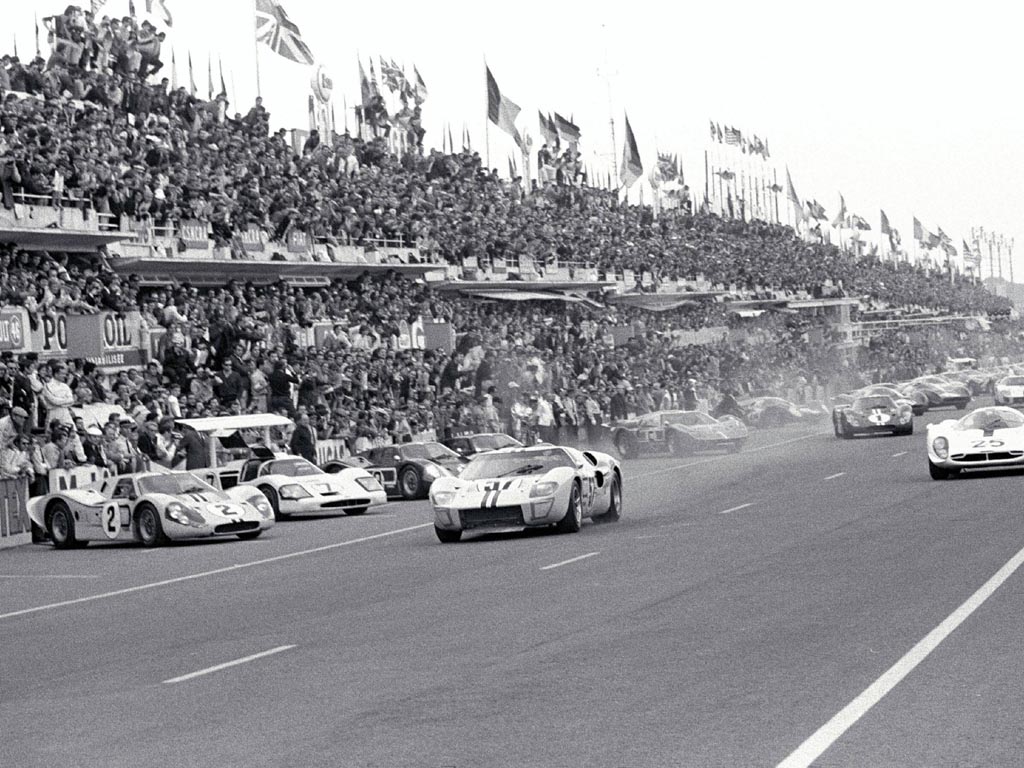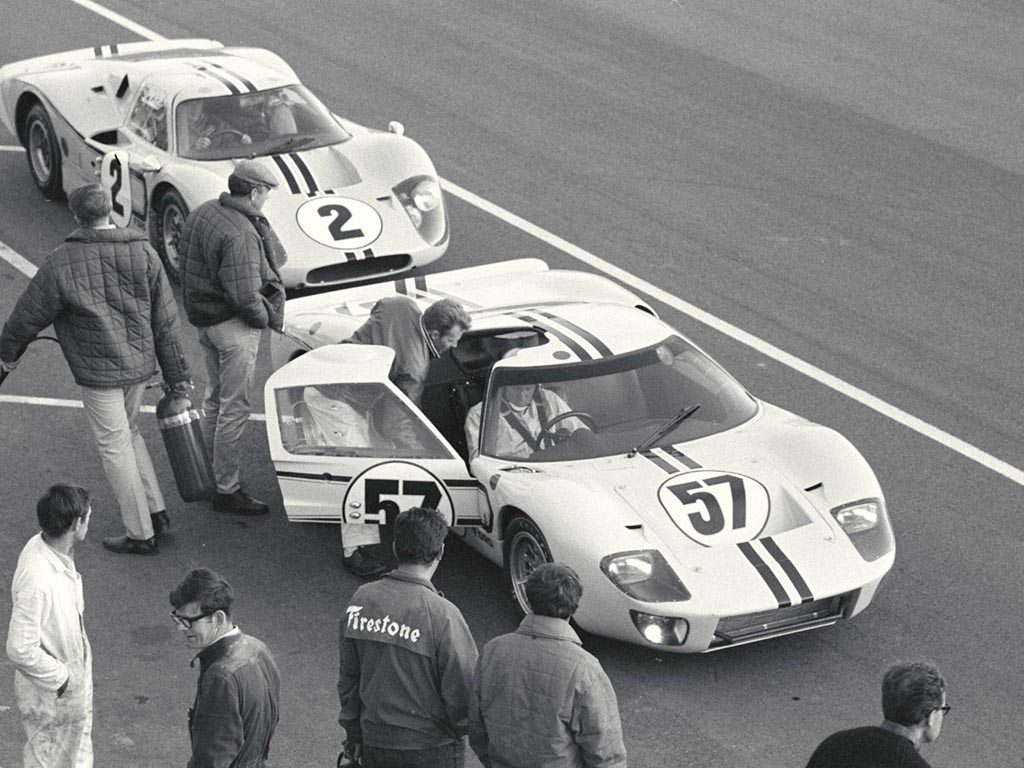1967 Ford GT40 Mark IV
In 1966, Ford achieved top honors in the field of international endurance racing. Despite growing costs, Ford decided to continue development of the GT40 for the 1967 season. This campaign was already the largest and most expensive American assault on the predominantly European series.
While the 427-powered Mark II cars proved a remarkable success in 1966, their hefty weight motivated Roy Lunn, a senior designer at Ford, to seek out drastically new designs. Two promising projects had already been in development and both incorporated aluminum in their chassis design. The first such car was the X1 prototype built by McLaren Racing Limited. This car featured an aluminum version of the GT40 tub and raced quite successfully, winning at Sebring in 1966. The second project, called the J car, was a much more experimental than the X1. This fresh approach appealed to Lunn, who convinced Ford to move forward with the project.
The J Cars
It was the technique of using honeycomb-sandwiched aluminum which motivated the J car. This technique used half inch honeycomb aluminum panels which had to be bonded together. The first J car would use this honeycomb aluminum to form a central tub chassis similar to the GT40’s. The final specification for the car adhered to the Appendix J regulations for race car construction.
Since Ford Advanced Vehicles had been sold off, the J Car was produced by Fords subsidiary Kar Kraft. Ed Hull headed construction of the experimental J-Car program with assistance from the Brunswick Aircraft Corporation.
image: http://www.supercars.net/graphics/1967_ford_gt40_mark_iv-36.gif

image: http://www.supercars.net/graphics/1967_ford_gt40_mark_iv-33.gif

On The Track
With the promising results attained during testing, Ford debuted the Mark IV GT40, specifically J-4, at Sebring. From the start, J-4 led the race, ahead of Jim Hall’s Chapparal 2F. It took victory with McLaren and Andretti behind the wheel. After winning on it’s debut race, Ford decided to prepare more Mark IVs for Le Mans, the most important race of the year.
image: http://www.supercars.net/graphics/1967_ford_gt40_mark_iv-7.gif

A Ford Victory.
image: http://www.supercars.net/graphics/1967_ford_gt40_mark_iv-6.gif

Sources & Further Reading
Jones, Gordon et. al. The FORD That Beat FERRARI: A Racing History of the GT40, Kimberley’s, London: 1985.
Ludvigsen, Karl E. The Inside Story of The Fastest Fords, Style Auto Editrice: 1970.
Pritchard, Anthony. Ford vs Ferrari: The Battle for LeMans, Zuma Marketing: 1984.
Shoen, Michael L. The Cobra-Ferrari Wars 1963-1965, CFW: 1988.
Spain, Ronnie. GT40, An Individual History and Race Record, Osprey Publishing: 1986.
Turner, Philup et al. ‘Ford Fantastic’. Motor, June 1967.
Story by Richard Owen, edited by Leif Parker for Supercars.net
In Detail
| submitted by | Richard Owen |
| type | Series Production Car |
| built at | Detroit, Michigan, USA |
| engine | V8 |
| position | Mid Longitudinal |
| aspiration | Natural |
| valvetrain | Pushrod Operated, OHV |
| fuel feed | 4V Holley Carburettors |
| displacement | 6997 cc / 427.0 in³ |
| bore | 107.7 mm / 4.24 in |
| stroke | 96.1 mm / 3.78 in |
| compression | 10.75:1 |
| power | 372.9 kw / 500.1 bhp @ 6400 rpm |
| specific output | 71.47 bhp per litre |
| bhp/weight | 500.1 bhp per tonne |
| torque | 637.2 nm / 470.0 ft lbs @ 5000 rpm |
| body / frame | Fibreglass over Unit Aluminum Honeycomb Tub |
| driven wheels | Mid Engine / RWD |
| front tires | 9.75 x 15 Goodyear |
| rear tires | 12.8 x 15 Goodyear |
| front brakes | Ford Vented Discs |
| rear brakes | Ford Vented Discs |
| front wheels | F 38.1 x 20.3 cm / 15.0 x 8 in |
| rear wheels | R 38.1 x 30.5 cm / 15 x 12 in |
| steering | Rack & Pinion |
| f suspension | Double Wishbones w/Coil Springs, Shock Absorbers, Anti-Roll Bar |
| r suspension | Trailing Arms w/Lower Wishbone, Coil Springs, Shock Absorbers, Anti-Roll Bar |
| curb weight | 1000 kg / 2205 lbs |
| wheelbase | 2413 mm / 95.0 in |
| front track | 1397 mm / 55 in |
| rear track | 1392 mm / 54.8 in |
| length | 4343 mm / 171.0 in |
| width | 1791 mm / 70.5 in |
| height | 978 mm / 38.5 in |
| transmission | Kar Kraft T44 4-Speed Manual |
| gear ratios | 2.32:1, 1.69:1, 1.29:1, 1.00:1 |
| final drive | 3.09:1 |
| top speed | ~354.1 kph / 220.0 mph |




